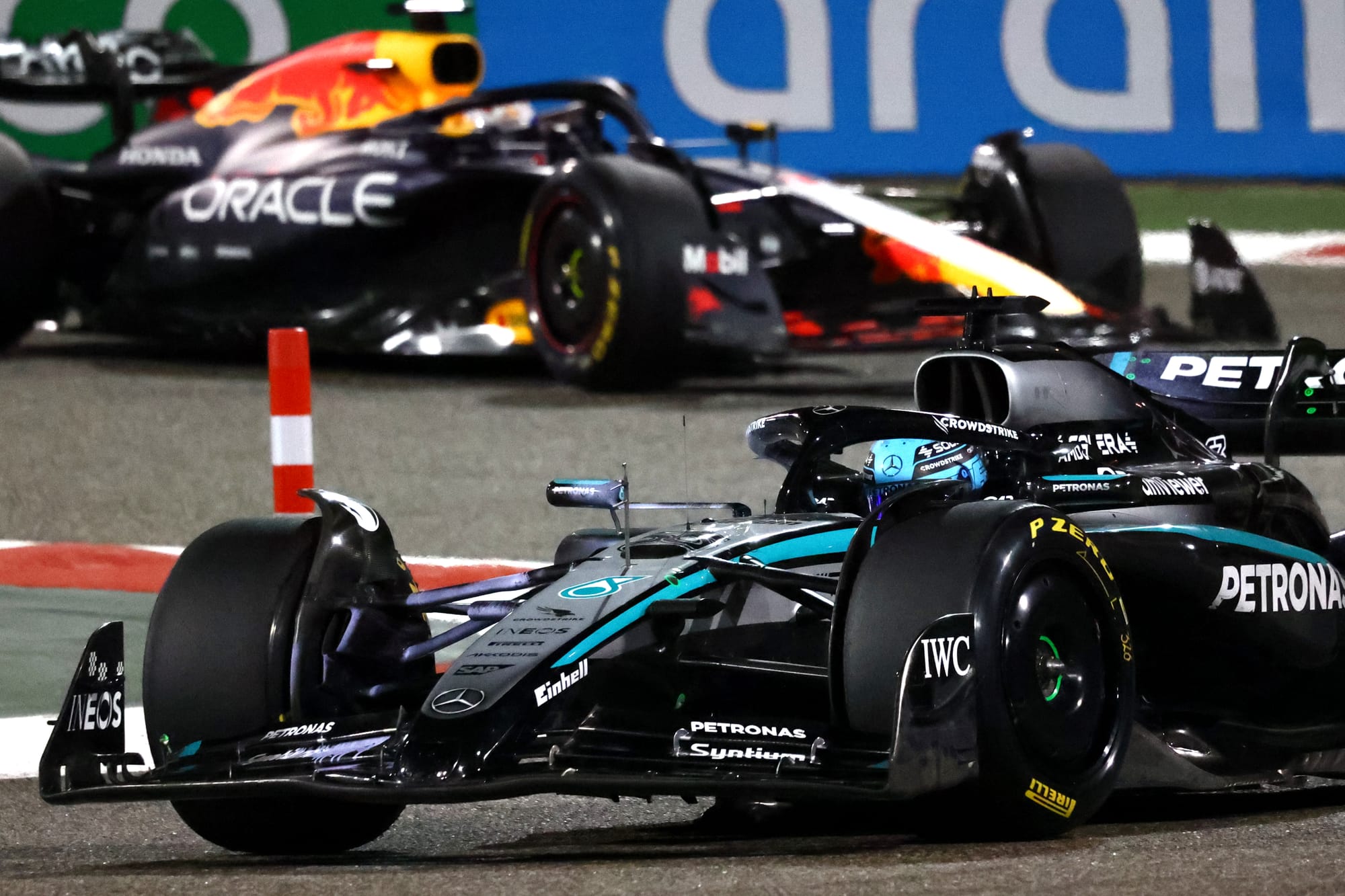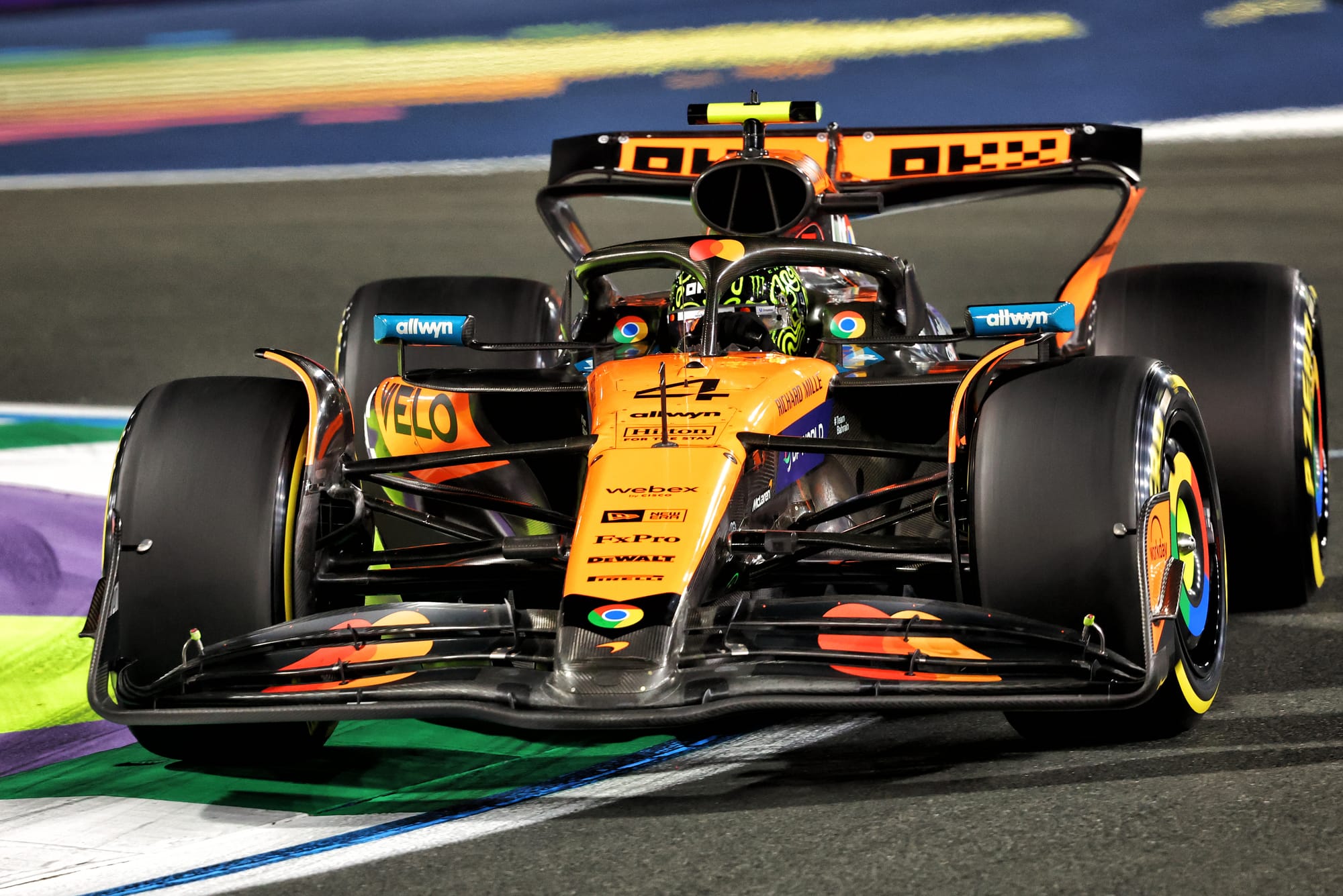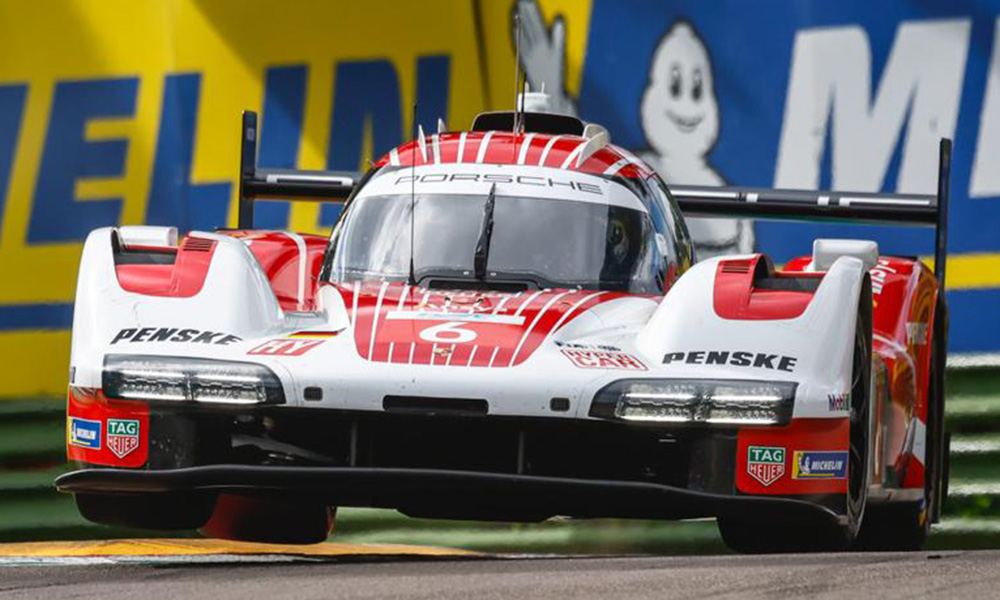2025 Zeekr 7X First Drive Review: China Is Cooking Now
On merit alone, the Zeekr 7X is an electric crossover that makes a strong case for itself. The post 2025 Zeekr 7X First Drive Review: China Is Cooking Now appeared first on The Drive.

I landed in China for the first time in June 2008. Heavily jet-lagged, I stepped out of the Beijing airport and hailed a cab with relative ease. It was a second-generation Volkswagen Jetta with a smattering of visual updates inside and out, including a new-look front end. This wasn’t an enthusiast’s home-brewed project: The boxy, second-gen Jetta that launched globally in 1984 was built in China all the way until 2013.
For decades, European car companies used the Chinese market as their InSinkErator. It wasn’t just Volkswagen; Citroën built a tweaked version of ZX there until 2013. Alternatives for buyers included half-assed and poorly-built locally-designed cars that hardly stood a chance in their home country, let alone in any western market.

That changed quickly in the 2010s for a number of reasons. One is that the Chinese middle class grew more prosperous and wanted something better than an outdated French hatchback to drive around in. Carmakers from China and abroad had to step up their game. In about 10 years, the cars went from “alright for what it is” to “alright” to “actually pretty good.”
Chinese car brands inevitably set their sights on overseas markets and were met with a sea of tariffs in Europe and in the United States. European planners are in the process of debating whether to replace the tax with a minimum price, however. But are they really a threat?
I hopped in a 2025 Zeekr 7X to find out.

What’s a Zeekr?
Listening to Lothar Schupet, the acting CEO of Zeekr’s European division, talk about the 7X feels like teleporting myself back to CES 2016, but this time it’s all real. Fast charging controlled by a robot, semi-autonomous this, software-defined that, huge screens everywhere, all of it. Broadly speaking, Chinese brands took the pie-in-the-sky stuff we were promised years ago and ran with it. Is demand fueling supply, or is supply fueling demand? The jury is still out, but what’s certain is that tech is the new measuring stick in the new-car segment.
Zeekr is part of Geely, so it’s under the same roof as Volvo, Polestar, Lotus, the folks who make the London taxi, and others. But unlike Volvo, it’s a new brand. Headquartered in China with strong ties to Europe, it was founded four years ago and it has released eight cars since. It launched in its home country but it’s gradually spreading across Europe. Germany, Norway, France, and, surprisingly, Greece are on its to-go list for the next two years. It also developed the RT autonomous robotaxi that Waymo will test globally, including in America.

Executives argue there’s space for brands that overlap in the Geely group, at least in terms of pricing and technology. Some dealerships even sell Volvo, Polestar, and Zeekr under the same roof, and research shows that making them roommates hasn’t really confused buyers.
“Volvo’s positioning is very clear. It’s a lot more traditional and it has been associated with safety for many decades. Polestar is a new brand that has always focused very much on pure, clean design. Zeekr is the technology brand that puts a bigger emphasis on luxury,” Schupet told me. Zeekr also owns Lynk & Co, which sells smaller, cheaper cars aimed at younger buyers. It’s a bit like Geely’s answer to Volkswagen.
The 7X
Zeekr is many galaxies away from the average startup with shaky funding and empty promises. Beyond self-driving cars, Zeekr’s resume includes a sedan called 001 that, at 129 mph, claimed the world record for the fastest drift by an electric car. This is not that. Instead, the 7X is an upmarket, five-seater SUV that primarily sells on technology and space. It starts at about €52,990 (roughly $60,000) and stretches approximately 190 inches long. Put another way, it’s five inches shorter than a BMW iX yet it costs less than a European-spec X3.



The styling is bold in that anonymous way that characterizes many EVs, especially those built by brands that are relatively new to the market. It’s different because it can be (the company has no design DNA, so it’s able to experiment with different ideas) and because it needs to be (the company is still laying out the foundations of a meaningful design language, so now is not the time for the design department to phone it in). The name “7X” follows this line of thinking, too. The body hides the modular SEA platform also found under the Polestar 4 and the Volvo EM90. No one at the company would tell me the percentage of parts that the 7 shares with the 4, however.
It’s the archetypical “Chinese EV” that car-industry CEOs on both sides of the Atlantic are poking and prodding politicians about. If you can get an iX for X3 money, why wouldn’t you? “Because it’s not a BMW,” you might say. Great point, but name recognition only goes so far – and the 7X is aimed at the type of buyer who might be more turned on by the idea of something new than by the idea of an illustrious heritage. It’s for the motorist whose perfect definition of a daily driver is a smartphone with a car attached to it. This is a once-in-a-lifetime opportunity for Chinese brands to merge into the mainstream. It was unthinkable a decade ago, and it might be too late a decade from now.
Electrification helps. Decades of engine-making experience, the nebulous concept of a characterful exhaust note, and slogans like “one man, one engine” fly right out of the window without a parachute when we’re talking about EVs. It’s not that there’s no longer a market for a loud, old-school sports car. It’s that drivers in the market for an electric family car are more concerned about driving range, charging times, technology, and safety than about heritage. Electrification puts newcomers, regardless of the country they call home, on the same footing as century-old brands. The smarter Chinese companies, including those owned by Geely, are using that to their advantage. They’re aiming their vehicles at a group of buyers willing to try a new type of powertrain and new technology. After all, why not try a new company as well?

In Europe, Zeekr hopes to lure buyers into showrooms with three variants of the 7X called Core RWD, Long Range RWD, and Privilege AWD, respectively. My time behind the wheel was limited to the range-topping trim, which comes standard with power-operated front and rear doors, a 16-inch touchscreen, a 13-inch digital instrument cluster that’s a bit Porsche-like, six driving modes, an active air suspension system, and four-piston fixed calipers. Its 800-volt, dual-motor drivetrain draws electricity from a 100-kWh lithium-ion battery pack to develop 630 horsepower and 523 lb-ft of torque. Zeekr quotes a 3.8-second sprint from zero to 62 mph and up to 337 miles of range.
Is the 7X remarkable to drive? Nope, but it doesn’t need to be. It wasn’t developed as one of those “holy moly, you have to experience this” cars. There’s nothing remarkable about the current-gen RAV4, either, yet Toyota sold over 475,000 of those in the U.S. in 2024. From the driver’s perspective, the 7X is a pleasant enough place to spend time in that’s seriously quick, pretty smooth, and relatively quiet.





More importantly, it’s genuinely nice inside. Not “nice for a Chinese car”—it’s nice, period. It’s what you can realistically expect at this price point. The materials and the fit and finish really don’t feel better or worse than Volvo’s. There are storage compartments everywhere, the rear seats recline at the touch of a button, and the 7X offers one hell of a sound system. There’s so much legroom for the rear-seat passengers that I’m wondering if it wouldn’t have made sense for Zeekr to move the seats forward to clear up a bit more trunk space.
There are a handful of quirks, though, and not all of them are endearing. One is the direction of the window switches: You flick them up to lower the window, and vice versa. I suspect you’d get used to this, much like you get used to various age- and wear-related quirks in a classic car, but Schupet said it’s something a software update can fix if enough people complain about it. Another oddity is that the speakers integrated into the driver’s headrest sometimes blare out beeps, like warnings related to the electronic driving aids. That’s a bit too close for comfort.
Taco Bell On the Moon
So, what does this all mean for the American market? It’s complicated and a little opaque. Zeekr has no concrete plans to plant its stake in the States this year. Schupet reminded me that he’s the acting CEO of Europe, not the acting CEO of the entire company, so he couldn’t comment on whether that will change in the near future. The vibe I’m getting is that executives are still mainly focusing on Europe.
Keep in mind the American market is a tough nut to crack, with a dauntingly long list of country-specific regulations and preferences. However, that doesn’t mean a Chinese company can’t make it here. One interesting factor that often gets left out of the conversation about Chinese EVs is that some Japanese and South Korean brands started out with far worse products than, say, Zeekr has today, and gradually clawed their way up. Don’t believe me? Drive a 1986 Hyundai Excel and a 2025 Ioniq 5 back-to-back. And, this is Geely we’re talking about. The group has its shit figured out, a fat wallet, and global ambitions. BYD is another Chinese carmaker that ticks these three boxes.
Build quality is no longer a problem, which largely erases the whole “made in China” stigma, and China’s image as a tech leader might actually help brands like Zeekr. The 10-year warranty that’s available in Europe should keep the reliability-related concerns in check. Long-term parts availability is one potential red flag, but it’s not one that most buyers take into account when choosing their next daily driver. It’s mostly tariffs, then, that are keeping cars like the 7X away from our market, but Geely has already found a way to partially clear that hurdle.
“[Tariffs] are a tough hit,” Schupet said. “But, what we have done over the past few months is really incredible. We integrated a model of a 10% tariff into the entire ecosystem, from the supply chain to distribution, to make it sustainable. We will not change our price positioning. We chose it because we are convinced it’s the sweet spot for the customer. We said ‘let’s make it happen.’ We have been very successful with that strategy, and we’re continuing full-speed with our planned market rollout.”
It’s a matter of time until a Chinese brand pulls a Toyota and mops the floor with the competition. It’s an idea that sounded about as realistic as seeing a Taco Bell on the moon when 19-year-old me hopped in that Jetta taxi 17 years ago, but China’s car and technology industries have evolved at a meteoric pace. Who will it be? Geely via Zeekr or another one of its brands? BYD? Nio, which is also gaining quite a lot of traction globally? Someone else that’s not on our radar yet? I suspect we won’t have to wait long to find out.
| 2025 Zeekr 7X Specs | RWD | AWD |
|---|---|---|
| Base Price | €52,990 (~$60,000) | €62,990 (~$71,000) |
| Powertrain | Core: single-motor rear-wheel drive | 75-kWh battery Long Range: 100-kWh battery | dual-motor all-wheel drive | 100-kWh battery |
| Horsepower | 415 | 630 |
| Torque | 325 lb-ft | 524 lb-ft |
| Seating Capacity | 5 | << |
| Cargo Volume | 19 cubic feet behind second row | 2.3 cubic feet in frunk | << |
| Unladen Weight | 5,280-5,324 pounds | 5,589 pounds |
| Max Towing | 4,409 pounds | << |
| 0-62 mph | 6.0 seconds | 3.8 seconds |
| Top Speed | 130 mph | << |
| WLTP Range | Core: 298 miles Long Range: 382 miles | 337 miles |
| Max DC Charging Rate | 480 kW | << |
| Score | 7/10 |

Quick Take
Spacious and loaded with tech, the Zeekr 7X makes a strong case for thinking outside the box when shopping for an EV.
Got tips? Send ’em to tips@thedrive.com
The post 2025 Zeekr 7X First Drive Review: China Is Cooking Now appeared first on The Drive.








![[FREE EBOOKS] Machine Learning Hero, AI-Assisted Programming for Web and Machine Learning & Four More Best Selling Titles](https://www.javacodegeeks.com/wp-content/uploads/2012/12/jcg-logo.jpg)



















.jpg)




































































